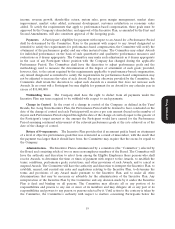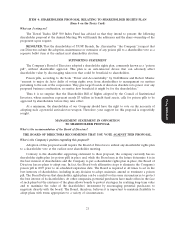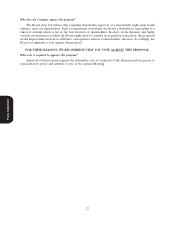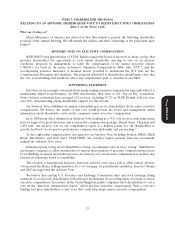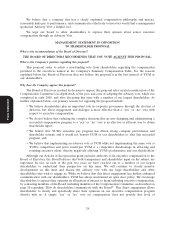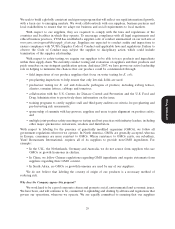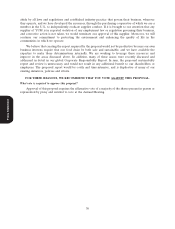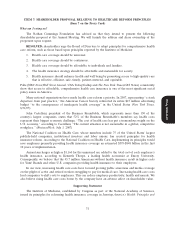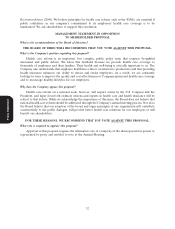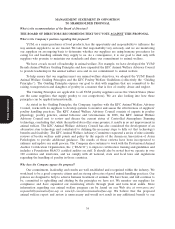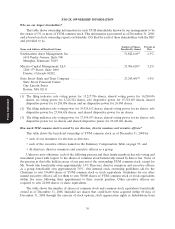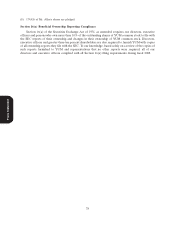Pizza Hut 2008 Annual Report Download - page 47
Download and view the complete annual report
Please find page 47 of the 2008 Pizza Hut annual report below. You can navigate through the pages in the report by either clicking on the pages listed below, or by using the keyword search tool below to find specific information within the annual report.
23MAR200920295069
We seek to build a globally consistent and rigorous program that will reflect our rapid international growth,
with a keen eye to emerging markets. We work collaboratively with our suppliers, business partners and
local stakeholders to ensure that we adapt our business and social requirements to local markets.
With respect to our suppliers, they are required to comply with the laws and regulations of the
countries and localities in which they operate. To encourage compliance with all legal requirements and
ethical business practices, YUM has established a supplier code of conduct summarized on our web site at
www.yum.com/responsibility/supply_chain.asp. Suppliers are expected to conduct audits and inspections to
ensure compliance with YUM’s Supplier Code of Conduct and applicable laws and regulations. Failure to
observe the Code of Conduct may subject the supplier to disciplinary action, which could include
termination of the supplier relationship.
With respect to safety testing, we require our suppliers to be able to trace products and ingredients
within their supply chain. We currently conduct testing and evaluation of suppliers and their products and
pride ourselves on our stringent qualification system. And since 2007, we have grown our active leadership
role in helping to minimize the chances that our produce could be contaminated through:
• field inspections of our produce suppliers that focus on water testing for E. coli;
• pre-planting inspections to help ensure that only low-risk fields are used;
• pre-harvest testing for E. coli and Salmonella pathogens of produce, including iceberg lettuce,
cilantro, romaine lettuce, cabbage and tomatoes;
• collaboration with the U.S. Centers for Disease Control and Prevention and the U.S. Food and
Drug Administration to proactively share information on the issue;
• training programs to certify supplier staff and third-party auditors on criteria for pre-planting and
pre-harvesting risk assessments;
• sponsorship of summits with key growers, suppliers and users to gain alignment on produce safety;
and
• multiple joint-produce safety meetings on testing and best practices with industry leaders, including
Proxy Statement
other major quickservice restaurants, retailers and distributors.
With respect to labeling for the presence of genetically modified organisms (GMOs), we follow all
government regulations wherever we operate. In North America, GMOs are generally accepted, whereas
in Europe, consumers are more resistant to GMOs. Where resistance to GMOs exists, our subsidiary,
Yum! Restaurants International, requires all of its suppliers to provide non-GMO ingredients. For
example:
• In the U.K., the Netherlands, Germany and Australia, we do not source from suppliers who use
GMOs or growth hormones in chicken.
• In China, we follow Chinese regulations regarding GMO ingredients and require statements from
suppliers regarding their GMO content.
• In South Africa, no GMOs or growth hormones are used by any of our suppliers.
We do not believe that labeling the country of origin of our products is a necessary method of
reducing risk.
Why does the Company oppose this proposal?
We work hard to be a good corporate citizen and promote social, environmental and economic issues.
We have been, and will continue to be, committed to upholding and abiding by all laws and regulations that
govern our operations, wherever we operate. We are equally committed to ensuring that our suppliers
29


